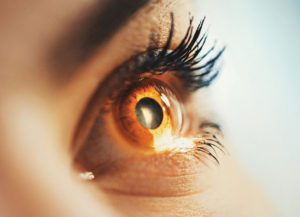By Dr. Katia Taba, Personalized Retina Care of Naples


An ophthalmoscope may be used to investigate the retina in the back of the eye. This instrument shines light into the eye, allowing doctors to see any signs of damage. A more intensive test known as a fluorescein angiography may be performed to investigate the blood flow into the retina. This involves taking pictures of the eye before and after a special fluorescein dye has been injected into the system and passed through the blood vessels of the eye. (1) The outlook for people with mild (grade 1 or 2) hypertensive retinopathy is relatively positive, so long as blood pressure levels are controlled. If, however, severe hypertensive retinopathy is not properly managed, the condition can enter a “malignant” stage, which is associated with a relatively poor prognosis. (2)
Ophthalmologists can grade hypertensive retinopathy using four categories or stages. The classification system is known as the Keith-Wagener-
Barker (KWB) grades.
• Grade 1: High blood pressure and narrowing of the arteries is mild. Generally, no symptoms are present.
• Grade 2: High blood pressure and narrowing of the arteries is more pronounced. Generally, no symptoms are present.
• Grade 3: Signs of damage such as retinal hemorrhage (bleeding) and cotton wool spots, i.e. white patches on the retina, are present upon inspection. Symptoms may be present.
• Grade 4: Severe Grade 3 plus swelling of the optic disc (papilledema). Symptoms are present.
There is a risk of complications associated with HR. People with HR are at risk of developing complications related to the retina. These include the following:
• Ischemic optic neuropathy occurs when high blood pressure blocks off normal blood flow in the eyes, damaging the optic nerve. The optic nerve carries images of what we see to the brain.
• Retinal artery occlusion occurs when the arteries that carry blood to the retina become blocked by an embolus or suffers vasospasm. When this happens, the retina doesn’t receive sufficient oxygen or blood. This results in vision loss.
• Retinal vein occlusion occurs when the veins that carry blood away from the retina become blocked by blood clots. It also can result in visual loss but frequently is reversible with treatment directed by a retinal specialist.
• Nerve fiber layer ischemia or damage to the nerve fibers may lead to cotton-wool spots, which are fluffy white lesions on the retina.
• Malignant hypertension is a rare condition that causes blood pressure to increase suddenly, interfering with vision and causing sudden vision loss. This is a potentially life-threatening condition. Malignant Hypertensive retinopathy (MHR) is created by high blood pressure and the reduced amount of blood flow to the retina. When a person’s blood pressure is too high, it prevents the retina from receiving blood flow. The retina can become swollen and its function severely limited. If blood pressure becomes dangerously high (called hypertensive emergency), the retinal veins can become dilated and twisted, and the optic disc (where the optic nerve meets the retina) may swell (called papilledema).(1) Malignant Hypertensive Retinopathy will usually be quite progressed by the time any symptoms are discovered. Among them are reduced vision, eye swelling, a blood vessel bursting or severe headaches. The body cannot sustain elongated periods of time with blood pressure racing against the heart and arteries without creating exhaustion of the circulatory system. As blood moves through the body the tissues along the arteries can be damaged and stretched.
People with Hypertensive Retinopathy are also at an increased risk of having a stroke or heart attack. One study found that people with HR were more likely to suffer from a stroke than people without the condition. This was true even in people with blood pressure controlled by treatment. Another study showed both an increased risk of stroke or cardiovascular disease in people with HR.
Blood pressure can be affected by several factors focusing on health. Lifestyle choices such as lack of exercise or being overweight, eating too much salt or a poor unhealthy diet, and even a stressful lifestyle can lead to hypertension. High blood pressure can also be genetic.
The only way to treat Hypertensive Retinopathy is by focusing on controlling the person’s blood pressure. The easiest way to do that is to pinpoint lifestyle changes that are healthier alternatives. The easiest thing to change is the diet. Fruits and vegetables, along with drinking water and reducing salt intake are a few initial steps. Exercise and staying active is essential to maintaining a lower blood pressure. Medications can be prescribed to assist, but diet and exercise are key. Hypertensive Retinopathy can be avoided with low blood pressure and is another reminder to keep your body active and healthy.
www.retinanaples.com
3467 Pine Ridge Road Suite 103, Naples 34109
References:
a. Hypertensive Retinopathy – Eyewiki.aao.org
1. https://www.merckmanuals.com/home/eye-disorders/retinal-disorders/
hypertensive- retinopathy
1. https://ada.com/conditions/hypertensive-retinopathy/
2. https://www.healthline.com/health/hypertensive-retinopathy#treatments
 Southwest Florida's Health and Wellness Magazine Health and Wellness Articles
Southwest Florida's Health and Wellness Magazine Health and Wellness Articles
